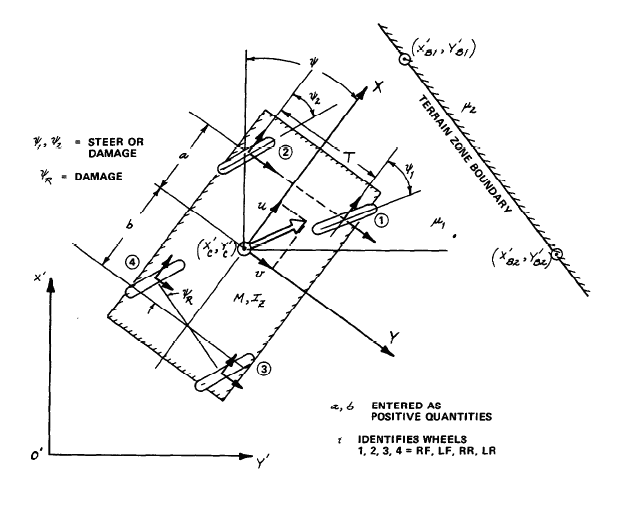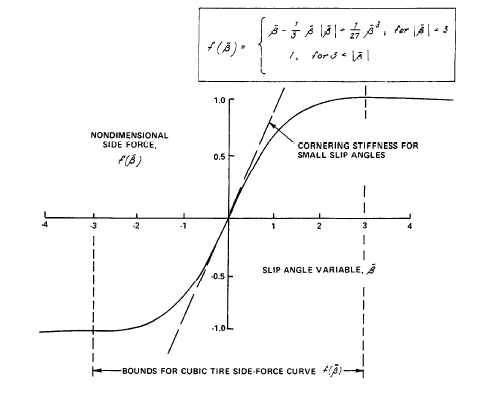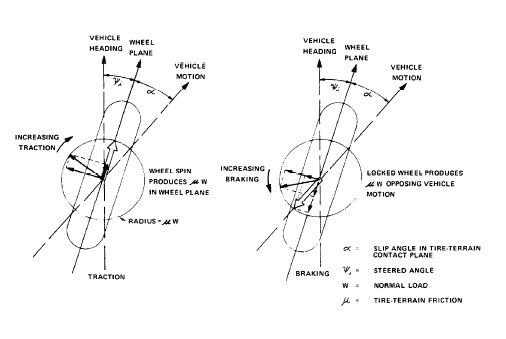Analytical Approach: Tire Forces
Most previous methods of analysis of the tire force aspects of reconstruction have been highly simplified. In some of the more detailed approaches, the automobile has been treated as a two-wheeled vehicle, or “bicycle,” in trajectory calculations (e.g., 2-5). It seemed obvious that the fidelity of reconstructions obtained with such simplified analytical models is quite limited. On the other hand, a highly detailed vehicle representation such as that of Ref. 8, would require extensive input data and would constitute prohibitive complexity for most applications. Therefore in the development of the SMAC program, an attempt was made to select a compromise approach which would avoid the extremes of either excessive complexity or oversimplification.
The selected vehicle representation is limited to the three degrees of freedom associated with plane motions (Figure 1 & Figure 2). The tire side force calculations are based on a non-dimensional side force function whereby the small-angle properties of the tires become progressively ‘saturated’ at larger angles (Figure 3). The “friction circle” concept is used to approximate interactions between side and circumferential (braking or tractive) tire forces. The concept (Figure 4) is based upon the assumption that the maximum value of the resultant tire friction force is independent of the direction of travel relative to the wheel plane. The cornering stiffnesses of the individual tires are input separately to the program to permit the simulation of damaged or partially inflated tires. A vehicle tread dimension is also included to provide realistic effects of individual tire forces (for example, a locked wheel or a flat tire) on yaw behavior and to permit detailed transitions across a boundary defining the terrain zones or areas with different friction coefficients.\

Figure 1 Analytical definition of colliding vehicles

Figure 2 Vehicle Representation for Trajectory calculations
The following specific analytical assumptions constitute the basis for the tire force routine of the SMAC program:
• The vehicle motions are limited to a horizontal plane in which the effects of pitch and roll are neglected.
• The terrain surface is assumed to be flat and horizontal.
• The effects of camber and roll-steer are neglected.
• The “friction circle” concept approximates the interactions between circumferential and side forces of the tires.
• A step change in the tire ground friction coefficient occurs at the boundaries of the terrain zones which are defined by a line and/or polygons.

Figure 3 Non-dimensional side force curve

Figure 4 Friction circle concept
 Extensions and refinements
Extensions and refinements